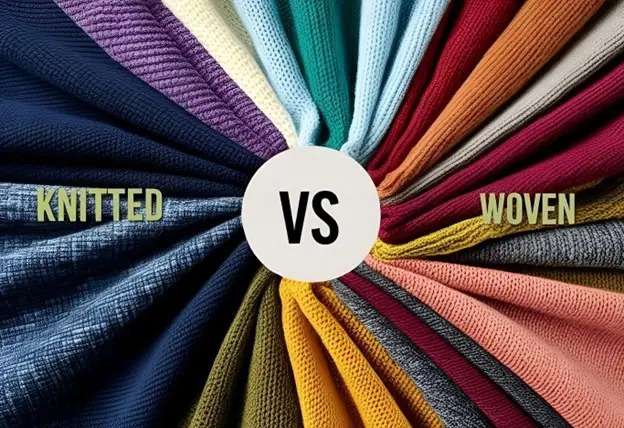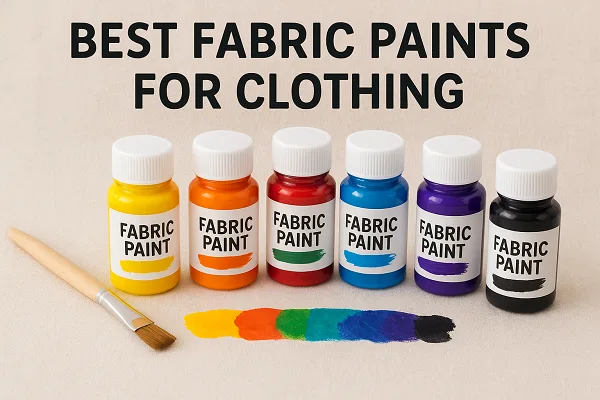Knitted vs Woven Fabrics: Which One to Choose for Your Project?
Choosing the right fabric can directly affect the look, fit, and performance of your textile project. As a textile engineer with experience in both apparel and industrial textiles, I can confirm that understanding how knitted and woven fabrics behave is essential. Each fabric type serves different needs, and selecting the wrong one can result in a poor fit, reduced durability, or discomfort. This article will explain how knitted and woven fabrics differ, and help you decide which is better for your project. This article explains Knitted vs Woven Fabrics: Which One to Choose for Your Project?
What Are Knitted Fabrics?
Knitted fabrics are made by looping yarns together. These loops form a stretchy, flexible structure. There are two main types of knitted fabrics: weft knits (like jersey) and warp knits (like tricot).
Example: Single jersey, Double Jersey, Fleece, Sherpa, Tricot, Mesh, etc.
Key Features of Knitted Fabrics
- Stretchability: Knitted fabrics stretch more than woven fabrics, especially in width.
- Comfort: They feel soft and smooth on the skin.
- Airflow: The looped structure allows for better breathability.
Common Uses
Knitted fabrics are commonly used for:
- T-shirts
- Leggings
- Sportswear
- Undergarments
- Casual dresses
They are ideal for clothing that requires flexibility and comfort, such as activewear or close-fitting garments.
What Are Woven Fabrics?
Woven fabrics are produced by interlacing two sets of yarns—warp and weft—at right angles. This structure creates a firm, less stretchy material.
Example: Taffeta, Pongee, Fake Memory, Micro Fiber, etc.
Key Features of Woven Fabrics
- Stability: Woven fabrics retain shape well and resist sagging.
- Durability: Their tight weave makes them strong and resistant to wear.
- Low Stretch: They have limited stretch unless blended with elastic fibers.
Common Uses
Woven fabrics are preferred for:
- Shirts
- Trousers
- Jackets
- Curtains
- Upholstery
They offer a polished look and hold up well under stress, making them suitable for both fashion and home applications.
Knitted vs Woven Fabrics: Side-by-Side Comparison

Stretch and Fit
Knitted fabrics stretch easily and return to shape, which makes them great for flexible or fitted garments. Woven fabrics do not stretch unless blended with spandex or elastane. They work best for structured garments.
Durability
Woven fabrics typically last longer in high-wear settings due to their tighter construction. Knitted fabrics may pill or distort with frequent use or rough handling.
Ease of Care
Woven fabrics are usually easier to wash and press. They maintain their shape well and resist shrinking. Knitted fabrics may shrink or stretch out if washed incorrectly.
Comfort and Breathability
Knitted fabrics offer superior comfort for daily wear due to their flexibility. They also allow better airflow, making them ideal for warm weather clothing. Woven fabrics, although more rigid, can also be breathable if made from natural fibers like cotton or linen.
When to Choose Knitted Fabrics
Choose knitted fabrics if your project involves:
- Activewear: Sports bras, yoga pants, and performance tops.
- Casualwear: T-shirts, tank tops, and sleepwear.
- Stretchable clothing: Items that need to move with the body.
Knitted fabrics conform to the body and feel soft on the skin, making them the go-to for comfort-focused designs.
When to Choose Woven Fabrics
Choose woven fabrics for:
- Formal wear: Suits, dress shirts, and trousers.
- Structured garments: Jackets, uniforms, and tailored pieces.
- Home textiles: Curtains, cushions, and tablecloths.
Woven fabrics offer better structure and durability, which is important in garments that need to hold their shape or endure frequent use.
Industry Tip: Look Beyond Appearance
As a textile engineer, I advise looking at how the fabric behaves, not just how it looks. For example, a lightweight woven cotton may look similar to a cotton knit, but the feel, fit, and drape will be very different. Always test fabric stretch, recovery, and drape before cutting or sewing.
Key Takeaways
| Feature | Knitted Fabric | Woven Fabric |
| Structure | Looped yarns | Interlaced yarns |
| Stretch | High (especially crosswise) | Low (unless elastic fibers are added) |
| Comfort | Very soft and flexible | Firm and structured |
| Durability | Less durable, may pill | Stronger and longer-lasting |
| Care | May shrink or stretch when washed | Keeps shape, easy to press |
| Best Uses | T-shirts, activewear, underwear | Shirts, pants, curtains, upholstery |
Final Decision: How to Choose Based on Your Project
Ask yourself the following:
- Does the garment need to stretch? → Choose knitted fabric.
- Is the garment structured or fitted? → Choose woven fabric.
- Will it face frequent wear and tear? → Prefer woven fabric.
- Is comfort your top priority? → Go with knit.
Always match fabric properties to the demands of your project. For comfort, go for stretch knits. For strength and shape, pick woven types.
Conclusion
Both knitted and woven fabrics offer unique advantages. Knitted fabrics provide stretch, comfort, and ease of movement. Woven fabrics deliver structure, strength, and a polished look. As a textile engineer, my advice is to align your fabric choice with the purpose of your project. Whether you’re designing athletic wear or making custom upholstery, choosing the right fabric ensures durability, fit, and satisfaction in the final product.
- You may love to read: 25 Key Differences Between Knitting and Weaving



